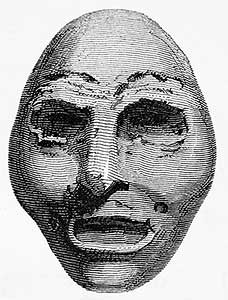CHAPTER II.
EARTH-WORKS, ENCLOSURES, ETC.
For the sake of convenience and easy reference, the enclosures of earth are arranged
according to counties, and so described. Works which were constructed of palisades simply, without embankments or ditches, do not fall within this arrangement, but will be
described collectively in a separate chapter, under the head of "PALISADED ENCLOSURES."
ST. LAWRENCE COUNTY.
A FEW aboriginal monuments are said to have existed in this county. One or two of these occurred near Pottsdam; but it is probable they are now nearly, if not quite, obliterated.A mound, eight feet in height, still exists on St. Regis Island, in the St. Lawrence River. It is crossed by the boundary line separating the territories of the United States and Great Britain. It was excavated by Col. Hawkins, of the United States Boundary Commission, in 1818. Near the surface were human bones in considerable numbers, and in good preservation; but at the base were found traces of fire, charcoal, burned bones, and fragments of pottery, together with some stone implements and ornaments.
 |
| Figure 1. Terra Cotta Mask. |
Copyright © 2010 Calvin & Rosanna Hamilton. All rights reserved.

